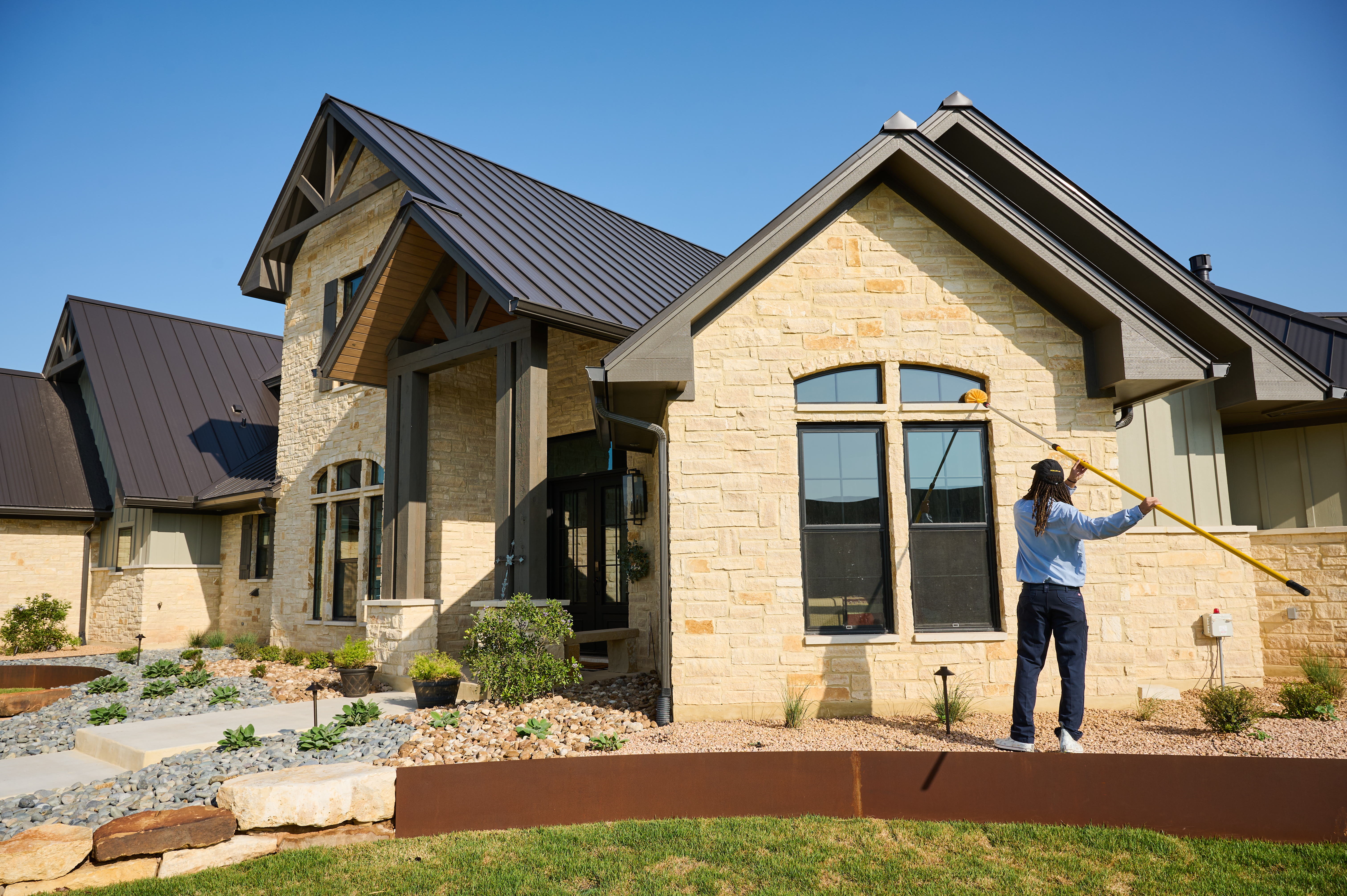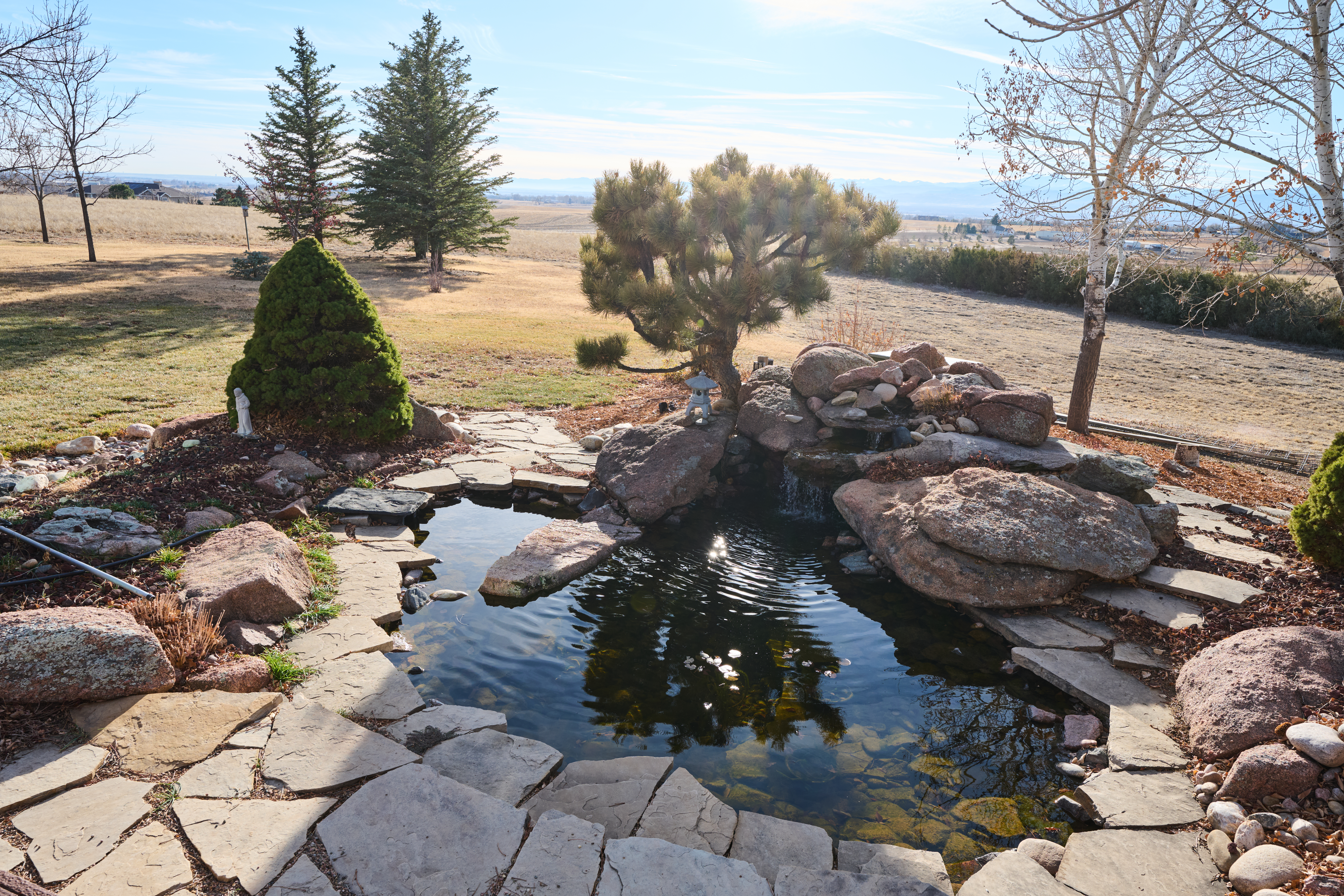
Leveling your yard can help with drainage and prevent damage to your home. Learn the cost to level a yard and what factors can affect the price.
Let’s cut to the chase: No, they’re not the same


Turf and artificial grass are both popular options for durable lawns that receive heavy foot traffic.
Organic turf has an excellent lifespan and regenerates, but it requires plenty of water and maintenance.
You can pick the color and style of your artificial grass, but it doesn’t hold up well under direct heat and sunlight.
Turf is more affordable to install than synthetic grass and it’s more sustainable.
Are you looking for an alternative lawn option to serve as a reliable playground, sports area, or yard? Two of the most common options are artificial grass and tough turf. You can find both in fields and parks across the country—but what works best for you?
Turf is affordable and self-sustaining, but it requires more maintenance, while artificial grass saves on water but tends to fade in heavy, direct sunlight. Check out the pros and cons of artificial grass and turf before hiring a pro to install the best option for you yard..
Beyond the organic, synthetic origins of the two grass options, artificial grass and turf can look quite different. Turf, common in fields and sports areas, is cut very short, while artificial grass is available in many lengths and shades. Artificial grass is often softer than natural grasses. But that’s just the start of their differences—let’s take a closer look.

Artificial grass is synthetic grass that’s made to look and feel like its natural counterparts (just without all the mowing and watering). It’s made with polyethylene, polypropylene, or nylon materials, each serving its purpose, giving you different types of artificial grass. Let’s look at what makes it a must-have for some homeowners and things you should consider.
| Pros | Cons |
|---|---|
| Realistic looking and plush | Pricey |
| Low maintenance and water needs | Hot in the summer |
| Usable indoors and outdoors | Looks worn down over time |
| Plusher and more uniform than organic turf | |
| Available in many shades and styles |
Best for:
Low-traffic areas so it doesn’t get worn down too quickly and reduce its life span
Homeowners who want the aesthetically pleasing look and feel of real grass
Yards that children play and pets roam around on
Not much inconvenient downtime: Rainy weather and pest control limit when you and your family can use your lawn. But since artificial grass dries out quickly (and doesn’t harbor pests), you can continue using it in hours, not days.
Low maintenance: Artificial grass is, well, artificial, so it doesn’t come with the same maintenance requirements as natural grass, like mowing, edging, and seeding. You don’t need to worry about brown spots, fungus, or bare patches that aren’t growing properly.
Saves water: Artificial grass doesn’t need water, making it an effective way to save on water costs and meet local water regulation laws in drier areas.
Resembles natural grass: It has a natural grass color, realistic blades that come in different lengths and designs that sway in the wind, and is soft underfoot.
Versatile: Since it’s so realistic, you can use artificial grass anywhere you want a pop of green, like a sunroom, backyard, or balcony.
Looks worn over time: Artificial grass is made for looks, not built for constant wear and tear. It can start looking flat and worn after continuous use in high-traffic areas.
Initial cost: This synthetic grass can last for years, saving money on mowing and watering your lawn. However, on average, artificial grass costs around $7–$17 per sq. ft.
Gets hot in the summer: While certain materials that artificial grass is made with can reduce its heat, it can still get fairly hot and might need to be lightly sprayed with water to cool it off.
Can trap bacteria: It can trap blood, skin, and animal waste, leading to bacteria like staphylococci breeding in your grass. So, while you don’t need to mow your lawn, you’ll still need to clean it.
Turf refers to types of lawn grass and sod layers that work best when mown short and regularly. This option is preferred for areas with moderate foot traffic. For that reason, turf grasses are often found on sports fields, parks, and play areas.
Common species used as turf include Kentucky bluegrass, Bermuda grass, St. Augustine, Perennial ryegrass, and Zoysia. While turf requires more maintenance and upkeep than artificial grass, it comes with extra benefits like a cool, organic feeling and the ability to prevent erosion.
| Pros | Cons |
|---|---|
| Affordable | Tears under heavy traffic |
| Erosion control | Requires regular watering, mowing, and care |
| Sustainable | Doesn’t grow easily everywhere |
| Excellent longevity |
Best for:
Parks, fields, and play areas that see moderate activity
Areas that need erosion control
Places where irrigation is easy and effective
Lawns that benefit from a cool, refreshing groundcover
More affordable than synthetic options: Whether you are laying sod or seeding bare patches, turf is a more affordable option than expensive synthetics.
Excellent erosion control: Turf species excel at erosion control and make great choices for dusty hills and similar spots.
Keep yards cool: Unlike artificial grass, turf will help cool down an area, making it a great choice for homes in high-temperature climates.
Self-healing and long-lasting: Turf can grow back and heal when damaged, and with proper care, turf will last as long as a house.
Tears under heavy traffic: While turf can withstand sports and play in moderate amounts, heavy foot traffic will tear it and cause bare spots.
Requires regular water and care: Organic turf needs regular watering and frequent mowing during growth seasons. It also often needs additional maintenance, such as fertilizer and pesticide application.
Doesn’t grow easily everywhere: Turf species are resilient but have preferences about the amount of sun and shade they need, so not every species will grow easily in arid climates.
Choosing between artificial grass and turf can be a tough call. It pays to think about what each material offers and the type of area you want to cover. Here’s a breakdown of both products to help you decide.
One of the benefits of artificial grass is that it has a tidy, green look—and it doesn’t go away. Plus, artificial grass is available in a number of shades and appearances, so you can customize it or find a look that matches your old lawn. The downside is that artificial grass can get stained by large messes or pet urine.
Turf grasses look beautiful, but they take time to grow and maintain, and it’s more difficult to guarantee their appearance. They are also sensitive to changes in shade and sunlight, and may go dormant in winter, which are problems that artificial grass doesn’t have.
If you’re worried about affordability, turf is an easy choice. It’s much less expensive to install a layer of organic turf, costing homeowners between $1,000 and $3,000 for a full sod installation. If you only need to cover a few patches of bare ground, you can choose to seed it instead, which is even less expensive.
Artificial grass, on the other hand, requires a lot of preparation and multiple ground layers to install properly, and it often needs to be handled by local artificial grass installers. A full yard installation costs homeowners between $3,000 and $8,700 on average.
Artificial grass is very tough underfoot. It can stand up to heavy use and foot traffic, then spring back with minimal loss in appearance. Constant use may flatten it over time, especially varieties with longer blades, but it remains the best choice if you’re tough on your lawn.
Turf is one of the toughest organic grasses, which is why it’s used in so many sport fields, but it’s more vulnerable than artificial grass. Cleats can rip and tear it, heavy toys can damage it, and and bikes or four-wheelers can tear it up. It’s much slower to recover than artificial grass, too.
While turf may be slow to recover, it can recover over time and flourish with proper care. Well-maintained turf grasses can last the life of a house, and you don’t have to worry about them suddenly reaching the end of their lifespan. Artificial grass, while tough, lasts a couple of decades before it needs replacing, especially with heavy traffic.
Artificial grass requires maintenance, including weed control, cleaning, animal and pest prevention, and more.
Organic turf requires more maintenance, such as regular watering, frequent mowing during growth seasons, and prevention tasks for weeds, moss growth, and bug infestations.
Organic turf needs to be watered frequently, especially during its growing seasons. Artificial grass allows homeowners to save a lot of money on watering. That’s even more useful in areas that are affected by droughts or cities that have strict water regulations.
However, that doesn’t mean artificial grass doesn’t need water at all. When installed, it will need proper drainage so standing water after rainfall won’t become a problem. The grass also benefits from occasional “watering” to keep it clean and prevent stains.
Artificial grass takes a lot of work to install, including several layers for drainage, leveling, weed barriers and infill. That adds up to a lot of materials and labor during the installation process, requiring hiring a local artificial grass installer.
Organic turf, in comparison, is very easy to install. You either roll out sod or scatter seed, depending on your goals, then water it well and keep an eye on progress in the coming weeks. Turf takes time to establish, usually a few weeks to a couple of months, but as long as you have patience, it’s not a lot of work.
You can put artificial grass nearly anywhere, especially spots where organic turf won’t grow. That includes indoor areas like sunrooms and outdoor spots like around swimming pools, patios, or balconies. The biggest caveat is that artificial grass can grow unpleasantly hot in the sun, and in more confined spaces it can have a “plasticky” smell, especially when it’s new.
Turf is limited by its water, shade, and light needs as well as accessibility with a mower.
Artificial grasses are made from materials like polypropylene, polyethylene, and nylon, so it isn’t a sustainable option. While artificial grass saves water and fuel otherwise spent mowing, it also releases microplastics into the environment.
Turf requires water and some use of fertilizer or pesticides, but it also comes with many environmental advantages. Turf helps cool down the area where it’s planted and can act as excellent erosion control. It can help improve the soil where it's planted, and provides a more hospitable environment for nearby wildlife and the overall ecosystem.
From average costs to expert advice, get all the answers you need to get your job done.

Leveling your yard can help with drainage and prevent damage to your home. Learn the cost to level a yard and what factors can affect the price.

Ivy might look pretty, but you probably don’t want it in your garden. Learn how much it’ll cost to remove ivy by type, treatment method, and more.

Looking to step up your golf game without leaving your property? This guide details backyard putting green costs to help you decide if this project is worth it.

It’s natural to judge, but which home aspects get the most criticism? From lawn care to messiness, find out what homeowners really judge the most.

Preparing your pond for the winter can keep it healthy until springtime. Learn how to winterize a pond with this how-to guide.

Wondering when the best time to regrade your yard is? Learn why fall is ideal and what factors you should consider that affect your specific timeline.